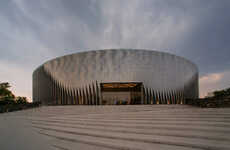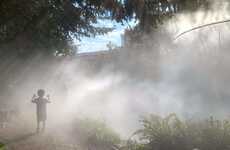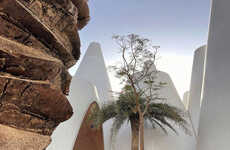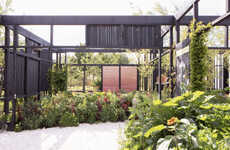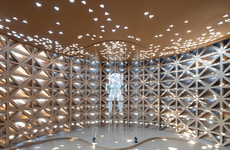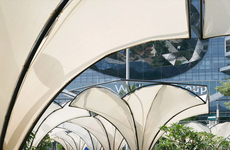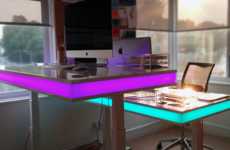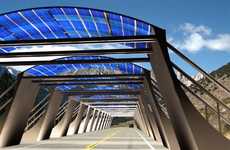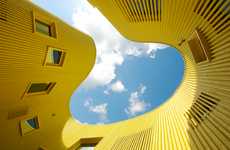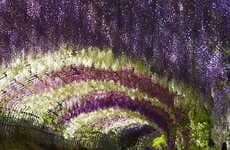
Epiphyte Pavilion Will Enhance the Environment of its City Surrounds
Amelia Roblin — November 3, 2011 — Eco
References: marvinbratke & ecofriend
Once upon a time, the purpose of a building was to provide shelter, but a strong relationship between inside and outside was maintained. Once built, the Epiphyte Pavilion will return to this more receptive idea of architecture, but employ technology to produce further intensified effects.
Marvin Bratke has planned for Munich as the eco installation's first location where it will sit lightly within a metropolitan square, inviting in the wind, the rain and the sunlight along with fascinated passers-by. With an organic sloping shell of solar panels and a system of rainwater collection, the structure will harness more renewable energy and resources than it consumes for a net negative environmental effect. The enchanting Epiphyte Pavilion will become a captivating venue for exhibiting artwork, while affording occupants a stimulating sensory experience with sound, light and even the emission of aromas.
Marvin Bratke has planned for Munich as the eco installation's first location where it will sit lightly within a metropolitan square, inviting in the wind, the rain and the sunlight along with fascinated passers-by. With an organic sloping shell of solar panels and a system of rainwater collection, the structure will harness more renewable energy and resources than it consumes for a net negative environmental effect. The enchanting Epiphyte Pavilion will become a captivating venue for exhibiting artwork, while affording occupants a stimulating sensory experience with sound, light and even the emission of aromas.
Trend Themes
1. Sustainable Architecture - Innovative eco-friendly architecture can be used to create installations that harness renewable energy resources and have a net-negative environmental effect.
2. Multi-sensory Art Installations - New art installations can be designed to incorporate sensory stimuli such as sound, light, and aroma to create a captivating experience for the audience.
3. Technology-enabled Architecture - Newly designed installations and architectures use cutting-edge technology to produce intensified environmental effects.
Industry Implications
1. Architecture and Urban Planning - Innovative designs and architectures can create a stronger relationship between buildings and the outside environment, and utilize technology and eco-friendly resources to minimize the environmental footprint.
2. Art Installation Industry - Designers and artists can incorporate sensory stimuli such as sound, light, and aroma to produce more dynamic art installations that provide a unique sensory experience.
3. Renewable Energy Industry - Installation designs and architectures can utilize solar panels, rainwater collection systems, and other eco-friendly methods to harness renewable energy resources and reduce the overall environmental impact.
5.1
Score
Popularity
Activity
Freshness

